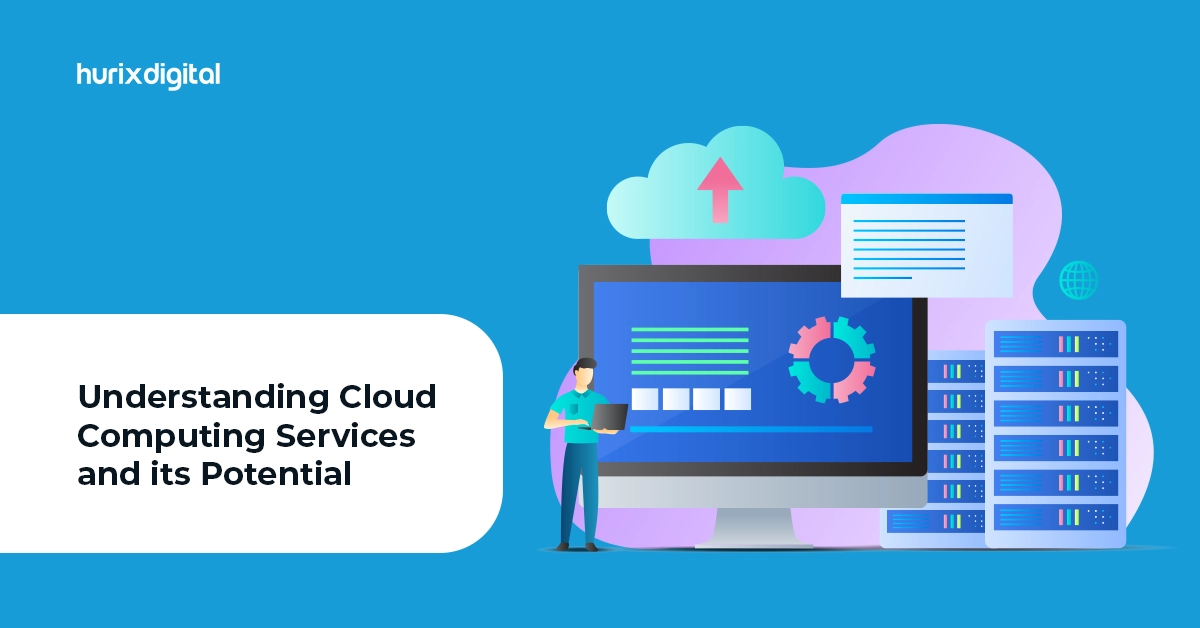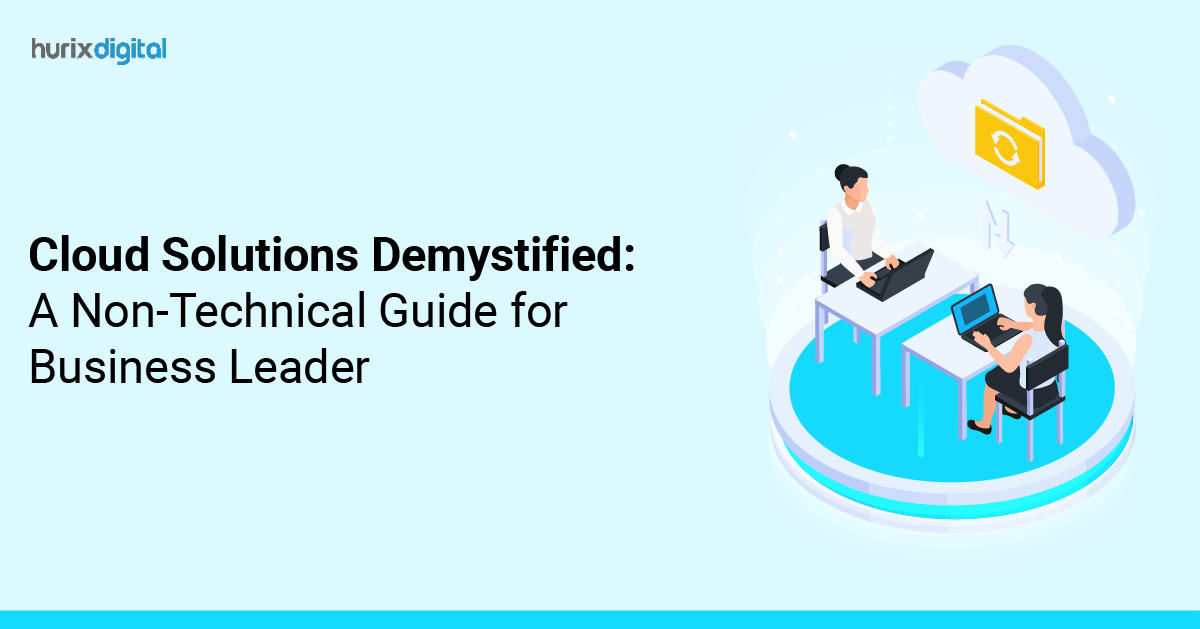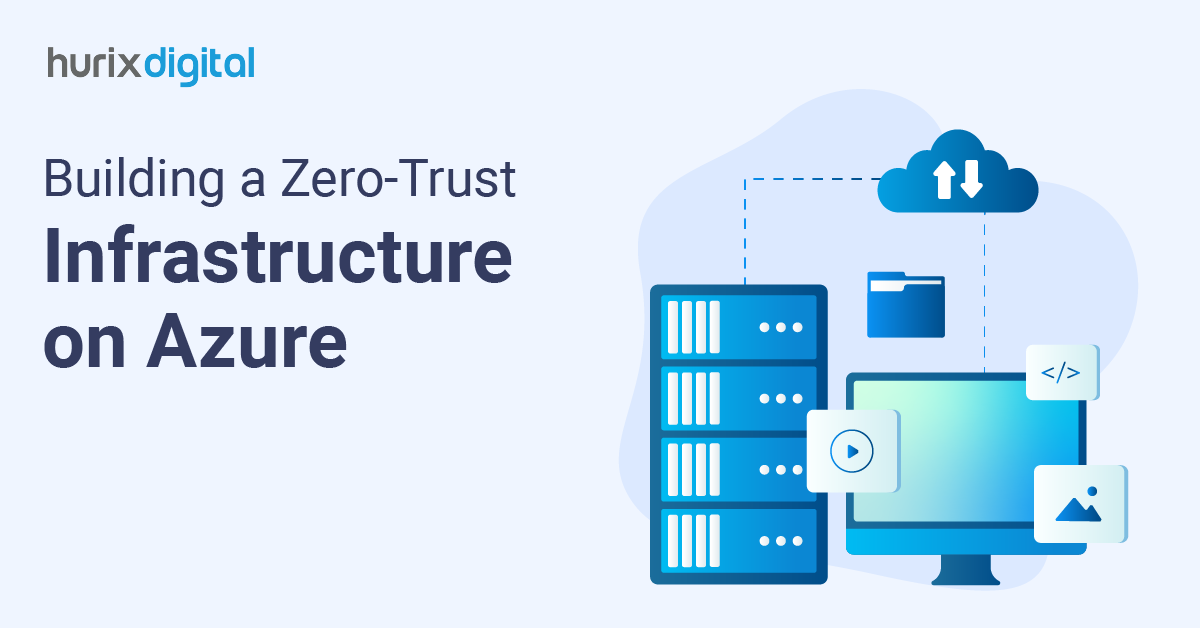
Understanding Cloud Computing Services and its Potential
Summary
Explore the fundamentals of cloud computing services and their potential benefits. This article provides an overview of cloud computing concepts and how they can be leveraged for business growth.
The Internet lets people connect faster than ever before. As a result, businesses are realizing how important it is to make sure that tools and services are always available.
In this aspect, cloud computing is dramatically changing the way we work, and companies worldwide are taking advantage of the cloud-based servers, services, and tools that this technology offers. Of this 626.4 billion dollar cloud computing market, 67% of enterprise infrastructure is cloud-based, and 82% of the workload will reside on the cloud.
Clearly, understanding cloud computing and how it fits into your business model is the need of the hour.
This article covers the basics of cloud computing, what advantages it offers, a few practices to improve its impact, and a quick checklist while you search for the right cloud computing provider. All in all, a comprehensive guide. So, let’s dive right in!
Table of Contents:
- Origin Story of Cloud Computing
- Advantage Review: Does Cloud Computing Help Your Business?
- Key Practices to Maximize the Impact of Cloud Computing
- Selecting the Right Cloud Computing Provider
- Taking Your Business to Cloud Nine
Origin Story of Cloud Computing
What is cloud computing?
Cloud computing is renting resources over the Internet whenever needed. The concept of cloud computing dates back to the 1960s when time-sharing frameworks in computers were developed.
Several major events propelled its rapid rise after this period. The 1990s’ growing need for on-demand resource access and pioneering Internet-based software as a service (SaaS) models lay the framework.
Finally, Amazon Web Services (AWS)’s 2002 launch of cloud storage and processing services confirmed cloud computing’s value proposition for organizations worldwide.
Cloud service providers offer these three main types of services,
- Infrastructure as a Service (IaaS): This cloud computing service offers access to virtual cloud-based servers, storage, and networking resources. There are also complete server infrastructure management services for businesses that focus on serverless computing.
- Platform as a Service (PaaS): Here, businesses are offered a complete development environment, a platform with tools for building and deploying applications.
- Software as a Service (SaaS): Businesses access and use software applications over the Internet. Some very popular SaaS forms include CRM and email software.
- Testing as a Service (TaaS): A cloud service provider also offers TaaS through on-demand testing environments and automation tools via the cloud. This targeted service helps businesses deploy software and programs more swiftly and reduces resources involved in debugging and re-coding.
Next up, let’s dive into the question of will your business improve with this technology.
Also Read: The Ultimate Guide for Streamlined Cloud-Managed Services
Advantage Review: Does Cloud Computing Help Your Business?
With the gist of cloud computing in mind, you may wonder which services best suit you and what advantages they offer.
Here are the key advantages cloud computing offers and which types of businesses benefit most from each advantage:
1. Scalability
Cloud services enable businesses to easily scale resources up or down based on the market situation.
This advantage is crucial to take advantage of, for businesses sometimes face a surge in demand, a slump, or routinely experience fluctuating workloads. Prime examples include e-commerce stores experiencing seasonal peaks and startups experiencing rapid growth.
2. Optimizes Costs and Efforts
Discuss the pay-as-you-go model and how it reduces upfront costs and maintenance expenses. Small businesses and startups with limited budgets can leverage cloud computing to access advanced technologies without a significant investment.
3. Seamless Collaboration
Cloud computing facilitates real-time collaboration and data sharing across teams, regardless of geographical location. It keeps all stakeholders updated and reduces time for well-informed decisions.
For businesses that comprise geographically dispersed teams, creative assignments driven by cross-functional inputs, or rely on project-based work, cloud solutions that drive this advantage can tremendously level up overall productivity.
4. Enhanced Security
Cloud computing services reduce the overall burden of protection against physical and digital threats and accidents. Cloud computing security also focuses on preventative security measures.
This advantage is crucial for businesses in healthcare and finance, as it helps maintain customer trust and improve compliance with industry regulations.
5. Increased Agility
Easier-to-access cloud tools streamline tasks, boosting business agility. With readily available services, your team can generate and implement new ideas faster, responding swiftly to evolving customer demands. This is a huge plus for companies in fast-paced and dynamic markets like tech startups and social media, where rapid adaptation is vital to success.
6. Business Continuity and Disaster Recovery
Cloud backups and redundancy minimize downtime from unforeseen events. Businesses of all sizes can benefit from this aspect of cloud computing, ensuring operational continuity during natural disasters, power outages, or cyberattacks.
Key Practices to Maximize the Impact of Cloud Computing
At this stage, you may have realized that you are already using some form of cloud solution in your business, or it may now be evident how important it is to get started.
Here are three key practices that have a game-changing impact on the extent of benefits you can draw from cloud computing services:
1. Review Your Needs Regularly
Conduct frequent audits of your cloud usage. It is crucial to review whether your services, whether IaaS, SaaS, or PaaS, are being optimally used and whether you need to add or change the nature of your services.
Through regular reviews, you will be able to ensure that your chosen services and resource allocation continue to meet your developing business demands. If your business volumes change, this practice allows you to make the most of your resources and scale them on time.
2. Training is Crucial and Constant
Along with availing of cloud computing services, it is also important that all stakeholders and employees embrace the cloud culture. Training modules to keep everyone equipped and informed are among the most essential elements in making the most of cloud solutions.
Considering that developments in cloud technology are constant, it is also imperative that learning modules are delivered regularly and consistently to keep all skills up-to-date and relevant.
3. Experiment with Innovative Cloud Computing Tools
Cloud computing doesn’t stop at a generic service you can avail of; it also offers space to develop innovative programs and tools that can save time and money. Automation and AI are two very powerful elements that can be incorporated into your cloud computing tools.
Increased automation allows for auto-scaling, serverless computing, and automated backups. By automating repetitive processes, you free up resources, streamline operations, and even have scope to improve your current non-cloud operations.
Through predictive or adaptive analytics, AI-powered functions can uncover hidden patterns and issues in usage or architecture. AI-driven cloud computing can also resolve these issues and suggest the best ways of utilizing uncovered patterns.
Apart from this, here are other key tips for maintaining the effectiveness of the cloud solutions that you avail,
- Focus on implementing continuous security upgrades.
- Strongly reviewing tech integration compatibility regularly.
- In case, you are making any cloud service changes, implement a robust data migration strategy.
Next up, a short list of what to look out for while searching for the right cloud computing provider!
Selecting the Right Cloud Computing Provider
The final step to embracing cloud computing is finding a provider that suits your needs the best. Here is a quick checklist to refer to during the selection process:
- Security First: Check industry-standard security features and compliance certifications.
- Scale Confidently: Make sure the provider’s infrastructure meets your changing needs and performs well.
- Pricing: Find a supplier with the cloud service model you need and a price point you can afford.
- Expertise: Choose a service with a good reputation and solid customer assistance for migration and beyond.
- Integration: Check for cloud service providers with high system integration and data format and application compatibility.
Also Read: The Revolution of AI in Cloud Computing: Transforming Education and Work
Taking Your Business to Cloud Nine
Cloud computing provides security, scalability, business continuity, and long-term cost savings, so you can only fly high. But to maximize the impact of your services, you must provide quality training to your users, analyze your needs and how well you use them, and be open to creative cloud solutions.
The checklist we’ve supplied will help you select the right service provider as the cloud computing market grows. However, getting the correct mix of cloud computing services requires advice from professionals like Hurix Digital.
As we seamlessly build the greatest solutions customized to your demands, you’ll soon be ahead of the competition and rising in success! So don’t hesitate to reach out to us now and get started!

Currently serving as the Vice President of Technology Delivery Operations at HurixDigital, a prominent global provider of digital content and technology solutions for publishers, corporations, and educational institutions. With over 16 years of experience spanning EdTech and various domains, I hold certification as a SCRUM Product Owner (CSPO). My expertise includes operations, finance, and adept people management skills.







